|
BUSINESS NEWS IN BRIEF 10/8
First
national forum on e-procurement held in Hanoi
The national e-procurement system (VNEPS) was the
spotlight of the Vietnam E-Government Procurement Forum 2018, the first on
the issue at the national scale, in Hanoi on August 8.
The VNEPS, run by the national e-procurement centre,
was introduced on a trial basis for six years and officially put into
operation nationwide in 2016.
Statistics of the centre show that the numbers of bid
inviters and bidders actively using the VNEPS have increased considerably. In
the first seven months of this year, nearly 9,000 bid packages were offered
online, doubling that in the same period of 2017. The figure is expected to
stand at about 15,000 in 2018.
Deputy Minister of Planning and Investment Vu Dai Thang
said despite encouraging initial outcomes, there remain many difficulties and
challenges in developing e-procurement. Hence, the ministry will push ahead
with fine-tuning the legal basis, improving staff’s capacity, disseminating
information to participants, and perfecting technical infrastructure.
Alexander Fox, Principal Procurement Specialist at the
Asian Development Bank (ADB) in Vietnam, said the ADB particularly recommends
the country modernise the VNEPS. It and the World Bank (WB) will also
strongly assist the Vietnamese Government to improve and promote
e-procurement via the VNEPS.
After successfully testing some bid packages in several
projects of the two banks on the VNEPS, the ADB and WB will expand e-bidding
for procurement and construction packages of projects funded with their
capital, he noted.
Nguyen Anh Tuan, Deputy Director of the ministry’s
Public Procurement Agency, said the VNEPS helps improve the transparency and
fair competition in government procurement. Steps in the bidding process are
conducted completely online, helping participants save time, cost and
manpower for the work.
Notably, e-procurement can help minimise negative acts
like cheating, collusion or obstruction in the bidding process. It is also
able to keep information about bid prices and bidders’ names absolutely secrete
before bid packages are put out to tenders, he stressed.
Tuan noted to develop the VNEPS, it is necessary to
improve the awareness of leaders in each entity taking part in the bidding
process. Authorised agencies also need to improve policies on the management,
technologies and operation of the system in order to align domestic legal
framework with international practice.
Vietnamese steel exporters warned of possible 25% tax
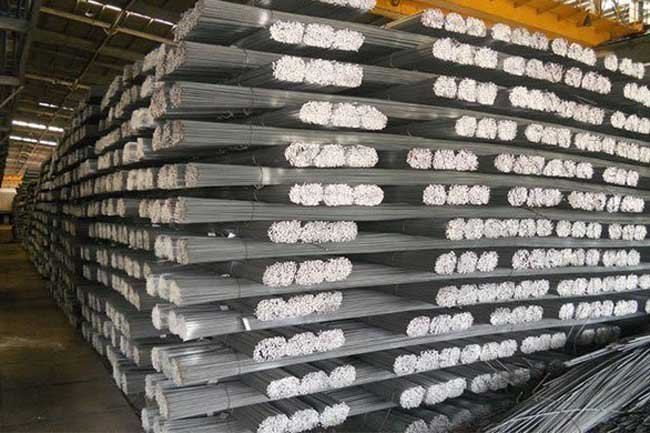
The European Commission (EC) might
levy a 25% tariff on steel imports from Vietnam
The Ministry of Industry and Trade has announced that a
steep tariff is likely to be imposed by the European Commission (EC) on steel
imports from Vietnam.
The ministry made the prior announcement to help steel
firms cope with tough times ahead, reported Sai Gon Giai Phong newspaper.
As the EC has issued a regulation to apply temporary
safeguard measures, imposing quotas on 23 of 28 types of imported steel
products, those firms whose steel exports exceed the allowed quota will have
to pay an additional 25% tariff.
Three of Vietnam’s 23 steel products---non-alloy and
other alloy cold-rolled sheets, metallic coated sheets and stainless
cold-rolled sheets and strips---are subject to export quotas, while 20 other
types of products shipped to the European Union are temporarily exempted from
the quota regime, meaning they are not subject to the 25% tariff.
However, Vietnam will face protectionist charges after
February 3, 2019, if the country’s steel exports exceed quotas by 3%
following the EC’s temporary protective measures.
The Trade Defense Department at the Ministry of
Industry and Trade will announce the quantity of steel bound for the European
Union so that Vietnam’s steel enterprises and the relevant agencies can
control and limit exports appropriately to avoid additional duties.
Real estate inventories drop
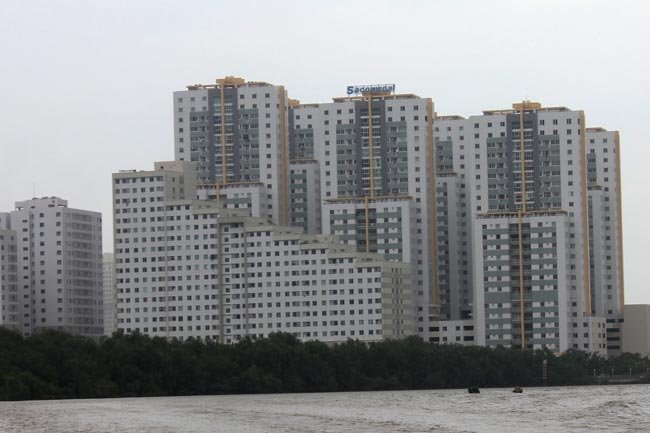
Condo buildings are seen in HCMC. According to a report
by the Department of Housing and Real Estate Market Management, the local
property market maintained stable development over the first six months of
2018, rising by 4.12% year-on-year
The total value of property inventories had plummeted
to a little more than VND24 trillion as of June 20, down by VND700 billion
compared with the first quarter of this year, according to a report by the
Department of Housing and Real Estate Market Management under the Ministry of
Construction.
Nguoi Lao Dong newspaper cited the report as saying
that the property market maintained steady growth in the first six months of
2018, rising by 4.12% year-on-year. The real estate sector recorded the
registration of some 3,300 new firms, up by a staggering 44.2% year-on-year.
The sector saw new foreign direct investment approvals
totaling some US$4.9 billion. The total capital of property projects now
underway is estimated at VND3,500-4,000 trillion.
The total value of property inventories as of June 20
slipped to VND24,072 billion. Real estate loans account for 6-8% of total
outstanding loans, remaining under control.
According to the Department of Housing and Real Estate
Market Management, medium- and high-end properties have faced a slowdown, but
low-cost condo buildings and houses have risen slightly due to high demand
and limited supply.
Nguyen Trong Ninh, head of the department, noted that
the real estate market will not see major changes in the rest of the year,
insisting that stable development was more likely.
He, however, warned property firms of the fever for
vacant land in some localities as several individuals have been taking
advantage of the plan to establish special economic zones and large traffic
projects, such as Long Thanh International Airport, metro lines in HCMC and
expressways, to spread rumors of land price rises.
No agency responsible for imported scrap backlog at
ports

Scrap containers are piled up at a
local port. The backlog of imported waste at ports is not currently under the
purview of any particular agency
The large backlog of imported waste at ports is not
currently under the purview of any particular agency, Nguoi Lao Dong
newspaper reported, citing delegates at a meeting on improving the control
and handling of scrap containers abandoned at local ports.
At the meeting held by the Vietnam Maritime
Administration under the Ministry of Transport on August 2, participants said
that enterprises, port operators, shipping firms and customs agencies have
yet to cooperate to control the import of secondhand products, especially
plastic. As a result, procedures continue to overlap, thus slowing down the
handling of these containers.
Phan Trong Lam, deputy general director of Vietnam
International Container Terminals, said that the handling of imported plastic
waste is regulated in six laws and falls under the jurisdiction of 10
agencies. However, no single agency has taken the lead, causing difficulties
for enterprises.
According to Nguyen Phuong Nam, director of the
operating center of Saigon Newport Corporation, ports have stopped accepting
plastic scrap containers since early last month. Paper and steel shipments
have been mainly sent to Cat Lai and Cai Mep ports, respectively.
Some 4,500 containers, storing scrap such as paper and
plastic, have been abandoned at Vietnamese ports as the identity of the
owners and transport firms remains unknown.
Bui Viet Anh, a representative of shipping firm Cosco,
told the participants of the meeting that the Ministry of Natural Resources
and Environment has issued certificates only to importers of small-sized
scrap.
He proposed the Government swiftly establish a working
group that includes the representatives of various agencies to deal with the
backlog of imported waste.
Shipping companies claimed they are not allowed to
check the containers before loading them onto ships. They have suggested
directly contacting the owners of the abandoned containers instead of
publicizing the information in newspapers.
Nhu Dinh Thien of the Vietnam Ship Agents and Brokers
Association argued that shipping firms need to know what they have
transported and should carry the ineligible scrap imports out of the ports.
He further suggested that certificates of eligibility
for environmental protection on scrap imports should be granted only to those
who are able to process the waste.
Bui Thien Thu, deputy head of the Vietnam Maritime
Administration, said the administration will propose the Prime Minister offer
a mechanism to build links between enterprises, port operators and shipping
firms to cope with the backlog of scrap containers.
Meanwhile, the Ministry of Natural Resources and
Environment needs to publicize the list of enterprises that are eligible to
import waste and amend regulations to speed up the handling of the large
volume of imported scrap at ports.
Fake products on ecommerce platforms raise concerns

The sale of counterfeit products over ecommerce
platforms at much lower prices than genuine goods seems to be becoming more
complicated, reported news website Vietnamplus, citing participants at a
conference on the tasks required of the market surveillance force in the
remaining months of the year, held in Hanoi on August 2.
Chu Xuan Kien, head of the Hanoi Market Surveillance
Agency, said the sale of fake and low-quality products on ecommerce platforms
will damage the confidence of consumers, and that most of the traders of
counterfeit, smuggled and banned goods are students and graduates. They tend
to store goods in different places, including their houses, making it
difficult for the competent agencies to detect and address the violations.
In addition, most of the online sellers neither have
specific outlets nor issue invoices, he noted.
An official of the Lang Son Market Surveillance Agency
said that some online vendors have taken advantage of social networks,
including Facebook, Zalo, YouTube, Twitter and Instagram, to sell fake
products bearing Vietnamese labels.
The online traders purchase the counterfeit goods and
labels separately to deceive the competent agencies.
At the conference, Trinh Van Ngoc, general director of
the Market Surveillance Agency, remarked that in the first half of the year,
the agency had detected and addressed more than 52,000 cases of fake
products, collecting a total fine of VND282.4 billion for the State budget.
The sale of smuggled, banned and fake products remains
a complex issue, mainly in the border provinces, such as Long An, An Giang,
Quang Tri, Ha Tinh, Nghe An, Quang Ninh and Lang Son, he added.
Some of the smuggled products are alcohol, beer,
confectionery goods, sugar, fuel, tobacco, fabric, clothes, cosmetic
products, food and electronic products.
As for hi-tech goods, smugglers often produce or
outsource them abroad and supply them to the local market. Low-cost fake
products are sometimes mixed with authentic ones, made in local industrial
parks and traditional craft villages, and are then transported to remote
areas for sale.
However, the lack of equipment and financial resources
has hindered anti-smuggling activities, Ngoc said.
Therefore, he proposed the Ministry of Justice
coordinate with the relevant ministries and agencies to promptly review the
execution of the Law on Handling Administrative Violations and, if need be,
amend the law to remove any shortcomings. He also suggested stricter
inspections to prevent smuggled goods from entering Vietnam.
According to Deputy Minister of Industry and Trade Do
Thang Hai, the Market Surveillance Agency’s achievements have yet to satisfy
the expectations of the Government and local consumers, as smuggled, fake and
low-quality products and those with unclear origins continue to flood the
domestic market.
Therefore, the agency needs to present solutions to
better fulfill its duties, contributing to stabilizing the domestic market
and protecting local products, Hai added.
Retail space supply remains stable: Cushman &
Wakefield
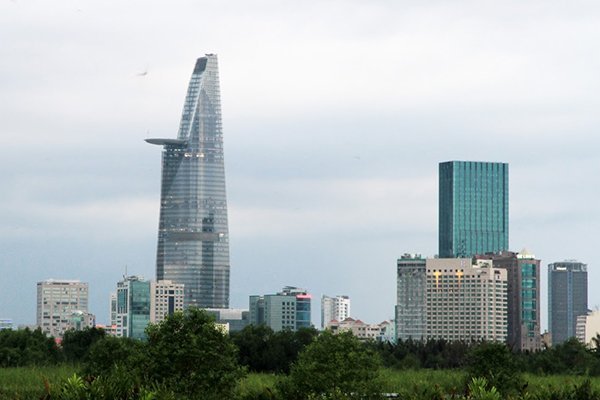
The retail space markets in HCMC and Hanoi City had
stable supplies in the second quarter of this year, according to a recent
report by leading global real estate services firm Cushman & Wakefield.
A well-controlled consumer price index, sustained
foreign direct investment, global economic integration and an improved
business environment were the important factors driving the economic growth
of Vietnam, according to the firm.
The recent signing of the Comprehensive and Progressive
Agreement for Trans-Pacific Partnership is expected to bring many economic
benefits to the country by strengthening investment and promoting exports.
In the second quarter of this year, the supply of
retail space in the HCMC realty market remained stable but reflected a
significant increase of 8.2% year-on-year, standing at roughly 1.24 million
square meters. Performance improved slightly, up by 1.7% quarter-on-quarter
and 1.1% year-on-year.
In addition, the overall average rent remained stable
in both quarters of the year, reaching more than VND1.19 million (US$51) per
square meter per month. The central business district (CBD) remained the most
expensive location, triple the rate of other districts and double the average
rent.
Meanwhile, in Hanoi City, the opening of two new
shopping centers and retail podiums in the second quarter resulted in a
significant increase in the total retail stock by 4.8% quarter-on-quarter and
7.3% year-on-year. The overall occupancy rate still trended upward, with high
absorption, mainly due to new projects demonstrating solid performance.
The average rent showed a marginal decrease by 2%
quarter-on-quarter and 0.3% year-on-year, mainly due to low rents being
offered by new projects in non-CBD areas. The retail space in the CBD was
priced at more than double the average rent in the secondary submarket, and
four to five times those in the western and suburban submarkets of Hanoi.
Jan-July rice exports near US$2 billion
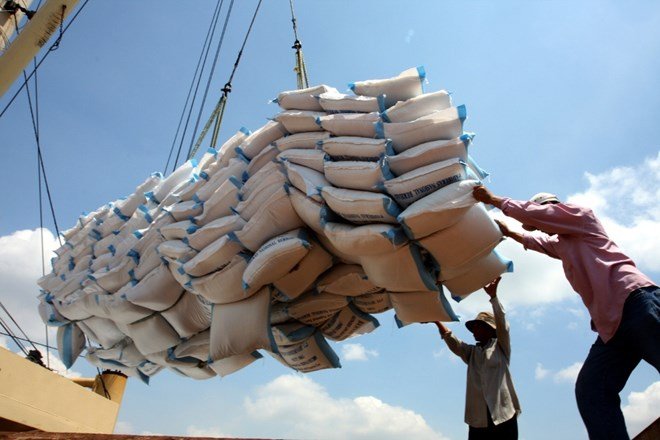
Vietnam’s rice exports in the January-July period
amounted to 3.865 million tons worth nearly US$2 billion, up 12.8% in volume
and 32% in value year-on-year.
Last month saw an export volume of 382,000 tons of rice
and a turnover of US$196 million.
These good results are attributed to the high export
price of Vietnam, at US$30-40 per ton higher than that of Thailand.
According to the Vietnam Food Association, dried paddy
in the Mekong Delta region is priced at VND5,650-5,750 per kilogram.
Meanwhile, the prices of long-grain paddy, grade-one rice material for 5%
broken rice and rice material for 25% broken rice are VND6,100-6,200,
VND7,250-7,350 and VND7,150-7,200 per kilogram, respectively.
Supplies are increasing amid harvest time in the Mekong
Delta region, while demand is low now.
Demand for rice is expected to pick up in the fourth
quarter. Cuba, Iraq, Indonesia, the Philippines and Malaysia -- Vietnam’s
five traditional markets -- may import 3-4 million tons of rice. China and
Africa may also have demands for more rice in the rest of the year.
However, rice shipment to Malaysia will decline against
early this year, and the Philippines will mostly import via the minimum
access volume scheme. Bangladesh may buy some 700,000 tons of rice this
month, with 400,000 tons potentially sourced from Vietnam.
Vietnamese firms deliver 60,000 tons of rice to Cuba
and 30,000 tons to Iraq each month. China remained the top importer of
Vietnam’s rice in the year’s first half, at 1.133 million tons, 1.115 million
tons of which were exported through official channels. The shipments were
also strong to Africa, at 537,000 tons; the Philippines, 429,000 tons;
Indonesia, 776,000 tons; and Malaysia, 305,000 tons.
According to Nguyen Trung Kien, board chairman and
general director of Gentraco, though China accounts for a large volume of
Vietnam’s rice exports, there are technical barriers against exports to this
market. Vietnamese firms thus need support to produce quality products that
meet high market requirements.
US$470m needed for 25 traffic infrastructure projects
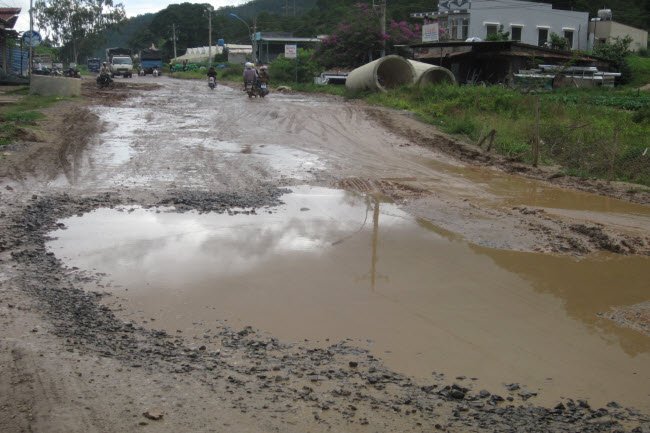
Twenty-five traffic infrastructure projects across the
country have come to a standstill due to financial hardship. They need an
additional VND11 trillion, or more than US$470 million, to resume
construction, according to the Ministry of Transport.
The projects include a section of National Highway 37,
running from Vinh Bao in Haiphong City to Gia Loc in Hai Duong Province;
National Highway 4A connecting Lang Son Province to Cao Bang Province;
National Highway 12 in Dien Bien Province; and a section of National Highway
91 passing through Tien Giang Province. Data from the Planning and Investment
Department under the ministry show that among the 25 projects, some fall
short of VND1 trillion each.
Nguyen Duy Lam, head of the department, noted that the
demand for traffic infrastructure projects, at some VND952 trillion, has
risen sharply in the 2016-2020 period, while the available financial
resources only meet some 30% of the demand. According to the medium-term
public investment plan of the Government, some VND120.7 trillion of the State
budget, which was allocated to the ministry, only partially meets the demand
to pay off liabilities.
In the coming days, the ministry will receive backup
funding of VND15 trillion from the Government for the 2016-2020 period, but
this capital volume is earmarked for 14 key road and railway projects, Lam
added.
The transport ministry has assigned the department to
evaluate the financial needs of the projects, so that it can propose the
Government to raise the backup funding to facilitate the 25 suspended
projects.
Vina Chuoi receives funding of more than VND2 billion
Vina Chuoi, a startup specializing in foods and
beverages made from bananas, received funding of VND2.3 billion (US$98,900)
from two investors on reality TV show Shark Tank, which was broadcast on the
evening of August 1 on the VTV3 channel.
Shark Dung Nguyen, investment director and head of the
Vietnam and Thailand offices of CyberAgent Ventures, Inc., and Shark Viet,
chairman and general director of Infrastructure Investment and Transportation
Construction JSC (Intracom), jointly invested in Vina Chuoi in exchange for a
51% stake in the startup, offering to solve its financial crunch. The
investors will consider putting in an additional VND1.3 billion based on the
startup’s business performance.
In addition, Shark Nguyen will assign supervisors to
follow up on the operations and expenses of Vina Chuoi. Once the business
becomes successful, Shark Dung will hand over complete ownership to founder
Pham Nhu Can.
Vina Chuoi has two selling points in central District 1
in HCMC and simultaneously operates an online business by cooperating with
the online food sales channel of Foody. Its revenue in the first half of the
year exceeded VND950 million, of which the profit accounted for 47.5%. The
company sells some 450 bananas every day.
Can has high hopes for his thriving business, stating
that the additional funding will help the company open more stores and
optimize its food-processing systems, such as frying banana cakes or making
banana smoothies. The startup reportedly has its own secrets regarding
flour-mixing technique. Its black Siamese bananas are imported from Tien
Giang, while the frying machinery was bought overseas.
In the same episode of the show, another project, named
Tokai, received VND12 billion from Shark Viet in exchange for a 51% stake.
The startup will offer houses on lease and exploit abandoned houses, also
known as “ghost houses,” in Japan.
Tokai founder Ha Canh targeted VND15 billion in revenue
in the first year of operations, VND28 billion in the second year and VND46
billion in the third. She noted that in the first four years of business,
Tokai will offer 70 rental houses to Vietnamese people traveling to Japan,
adding that she expected the annual profit to reach 25%.
Long An weighs building thermal power plant
Power Engineering Consulting JSC 2 (PECC2) has
recommended that Long An Province build a coal-fired power plant, as it is
considered more cost-effective. Meanwhile, local authorities want to construct
a liquefied petroleum gas (LPG) plant for power generation, according to Le
Minh Duc, director of the provincial Department of Industry and Trade.
Though the province wants to build a diesel-fired or
LPG power plant to generate electricity, which will become a big-ticket
project, the consulting firm PECC2 prefers the option of using coal, said
Duc. He also cited statements from the Ministry of Industry and Trade as
saying that if the province does not build a power plant running on coal, the
ministry will order a halt to this project, as its planning has consumed much
time.
The local government will announce final results of a
meeting on the thermal power plant project in Long An, held on the morning of
August 2, and then submit them to the provincial Party Standing Committee for
further discussion before reaching a conclusion, Duc noted.
The province was permitted to build a thermal power
center in Can Giuoc District, comprising two plants, Long An I and Long An
II, with a total capacity of 2,800 megawatts and total funding of up to US$5
billion, according to Le Anh Tuan, deputy head of the Institute of Climate
Change Research at Can Tho University.
However, none of the projects have yet to begin
construction due to strong objections from local residents in the province,
as well as in neighboring HCMC, as once a thermal power plant is put into
operation, it could cause severe impacts on human health and their
livelihoods, along with the environment and other economic sectors, said
Tuan.
Additionally, a coal-fired power plant will cause
invisible damages to society in the long run, including environmental
pollution, which will diminish agricultural production, tourism revenues, and
other fields. Tuan cited other major consequences, saying that if those
drawbacks are included when evaluating the plant’s total investment capital,
the funding will no longer be as low as estimated by PECC2.
Property market in coastal areas slows down

The coastal property market is experiencing a sharp
decline in both supply and liquidity in most localities known for tourism and
seaside resort properties, such as Danang, Nha Trang, Quang Ninh and Phu
Quoc, according to a report by the Vietnam Association of Realtors.
Sai Gon Giai Phong newspaper cited a report by the
Ministry of Construction at a forum on the property market in Hanoi on August
4 as saying that tourism properties have been developed in both coastal and
non-coastal localities. These properties are diverse and available in
different forms, such as hotels, condotels, shophouses and resorts.
Since 2015, the Ministry of Construction has conducted
preliminary evaluations of many projects with some 25,000 condotel and
officetel units, in addition to thousands of units assessed by localities.
According to experts, the influx of nearly 13 million
foreign tourists last year is a good driving force for the development of the
coastal tourism property market.
More than 12,000 resort apartments were built in Nha
Trang City in three years, with an absorption rate of 80-85%.
However, transactions in the new market dropped
significantly in the first half of this year, and there were very few
condotel transactions in the second quarter.
Nguyen Manh Khoi, deputy head of the ministry’s Real
Estate Market and Housing Management Agency, warned that investors should be
cautious of fluctuations in the market.
One of the factors blamed for the market’s decline is
profit commitments. A pledged rate of return at 12-15% is difficult as room
rates are not always high, making it hard for project developers to fulfill
their commitments to their clients.
Besides this, regulations that protect the rights of
customers are not clear enough. Some localities have halted investments in
condotel projects to wait for a legal framework, according to Khoi.
The vice chairman of the Vietnam Real Estate
Association, Nguyen Manh Ha, stressed that property developers and individual
investors need to be more professional and should understand investment
models and efficiency. Business associations and management authorities
should seek accurate analyses and evaluations to ensure the sustainable
development of the coastal tourism property market, he added.
However, the ministry representative revealed that
regulations on seaside tourism investments in the future will be clearer so
that the growth potential of the market can be exploited in the long term.
State to collect over VND500 billion from Petimex IPO
The State will collect an estimated VND509 billion from
the transfer of a 35.4% stake in Dong Thap Petroleum Trading Import Export
Co. Ltd. (Petimex), whose initial public offering is scheduled for September
7, the Hochiminh Stock Exchange (HOSE) said.
Local media cites an announcement from HOSE as saying
over 48.04 million shares, equivalent to a 35.4% stake, in the oil trader
will be auctioned on the southern bourse, with the reserve price set at
VND10,600 a share. With such an expected share price, the Dong Thap-based
State-owned company has been valued at VND1,437 billion.
Under the company’s equitization plan approved by Dong
Thap government, the State will still hold the majority stake of 64%, while
747,600 shares, equivalent to 0.55%, will be sold to the company’s employees.
Of the remainder, 15% will be offered to strategic investors, while 20.45% to
outsiders.
Interested bidders will have to place a deposit from
August 13, and the auction will take place at 9 a.m. on September 7.
Petimex, established in 1992, mainly trades in oil
products, ranking fifth among 30 key oil traders of the country, according to
VnEconomy. The company operates a network of over 1,500 filling stations.
In 2017, the company gained an after-tax profit of
VND72.4 billion on revenue of nearly VND11,500 billion. The return on equity
ratio was 9.1%.
Under its equitization plan, the company expects this
year’s revenue to ebb slightly to VND11,300 billion, but its net profit is
estimated to rise to VND80 billion.
Vietnam’s import-export turnover hits $264bln in first
seven months
According to the Vietnam Customs, import- export
revenue in the first seven months of this year reached $264.3 billion, a
year-on-year rise of 12.7 percent.
In July alone, export turnover hit $39.3 billion, up
1.1 percent from June. Specifically, value of export was estimated to reach
$19.5 billion, a decrease of 1.7 percent against the month before while
import value was $19.8 billion, an increase of 4 percent compared to June.
In the first seven months, export and import values
were estimated to be $133.7 billion and $130 billion respectively, posting a
year-on-year hike of 15 percent and 10 percent respectively.
Generally, the country’s trade deficit in July was $300
million while trade surplus was $3.1 billion.
Ben Tre: First-ever safe farm product cooperative put
into service
The Mekong Province of Ben Tre yesterday put into
service its first-ever safe farm product cooperative with an aim to supply
clean agricultural products to consumers.
The cooperative covers an area of 1,000 sq. meters at
Chau Thanh town, Chau Thanh district with total investment capital of up to
VND 1.6billion contributed by 100 members.
The cooperative has linked with other cooperatives,
local farmers to buy about 7 tons of clean agricultural products per month to
provide to consumers in the province and neighboring provinces.
Chairman Truong Duy Hai of Ben Tre Province People’s
Committee said the cooperative will help link between clean producers,
farmers and consumers. The province targets to develop this model in the hope
of ensuring safety for consumer health.
Hanoi exempts fees for household businesses being
converted into enterprises
Household businesses in Hanoi that are filing to become
enterprises will be exempt from registration fees from August 1 to December
31, 2018, according to the city’s Department of Planning and Investment.
Under the support programme, new enterprises
established from household businesses will not have to pay the fees to
announce their registration, in line with a government decree guiding the
implementation of the Law on Support for Small and Medium-sized Enterprises.
The waived fee is VND300,000 for each enterprise.
Household businesses-turned-enterprises will also be
provided with other support, including the fees to make their seals and
deliver their registration certificates.
The government is encouraging household businesses to
switch to enterprises in order to realise the goal of having one million enterprises
by 2020.
Last year the Law on Support for Small and Medium-sized
Enterprises was approved by the National Assembly and came into force on
January 1 this year.
Green asparagus offers high profits for Ninh Thuan
farmers
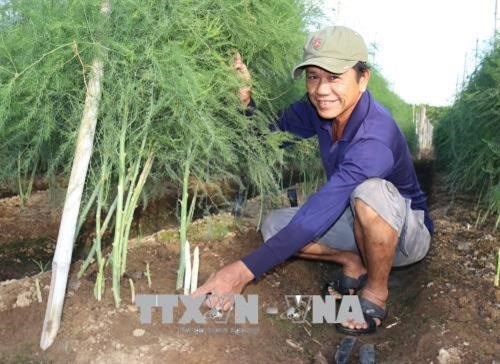
Farmers in the south central
province of Ninh Thuan are growing more green asparagus as the vegetable is
offering higher profits compared to other crops.
Diep Bao Thu, who shifted from growing grapes to
asparagus on his 2,000 sq.m farm in Ninh Hai district’s Xuan Hai commune last
year, now harvests about 18 - 22 kilo of asparagus shoots a day.
He sell the vegetable for 50,000 – 90,000 VND (2-4 USD)
a kilo and earns a profit of more than 1 million VND (44 USD) a day during
the harvest.
Vu Van Thuan, who has grown asparagus on his 4,000sq.m
land plot in Xuan Hai for four years, said the cost for 1,000 sq.m of
asparagus was about 15 million VND. The asparagus plants are harvested for
five to seven years, he said.
“Green asparagus can be harvested continuously for
three months, and then is stopped for one month to help the plant recover,”
he said.
Previously Thuan planted grape, jujube and spring onion
on his 4,000sq.m land plot but the profit was not high.
The province’s dry, hot weather and loamy sand are
suitable for growing green asparagus, according to local farmers.
Ninh Thuan has the least rainfall compared to other
provinces and cities in the country.
Nguyen Dinh Thi, Vice Chairman of the Xuan Hai Commune
People’s Committee, said that green asparagus had provided high profits for
farmers for a number of years. The profit is five to seven times higher than
that of other crops, he said.
The commune has 110 households planting a total of 21.5
ha of green asparagus, but supply has not met demand, he said.
Ninh Thuan authorities have encouraged farmers to
expand the area under asparagus in drought-prone areas.
Local authorities also provided advanced farming techniques
to asparagus farmers in recent years.
In 2016, the province’s Farmers Association started a
project to grow green asparagus under Vietnamese Good Agricultural Practices
(VietGAP) standards in Ninh Phuoc district.
The quality and yield under the project was 10-20
percent higher than from traditional farming.
Early this year, the province’s Department of Science
and Technology transferred the technique of using drip irrigation to
asparagus farmers.
The technique was first used by four farmers at the
Tuan Tu Agricultural Services Cooperative to plant 1.4 ha of green asparagus
in An Hai commune.
Hung Ky, director of the Tuan Tu Agricultural Services
Cooperative, said previously asparagus shoots were often infected with fungus
when spray irrigation methods were used.
The use of drip irrigation has helped solve the
problem, he said, adding that farmers in other areas have visited the
cooperative to learn about the technique.
The province has more than 100ha of green asparagus,
mostly in Ninh Hai and Ninh Phuoc districts.
The province will develop asparagus areas with advanced
farming techniques in a zone of 200ha in Ninh Phuoc and Bac Ai districts.
The province’s asparagus shoots are sold in the
province and to HCM City, Hanoi and Da Lat city and other provinces.
The vegetable was first planted in the province’s Ninh
Phuoc district eight years ago.
Thaco sets foot in agriculture
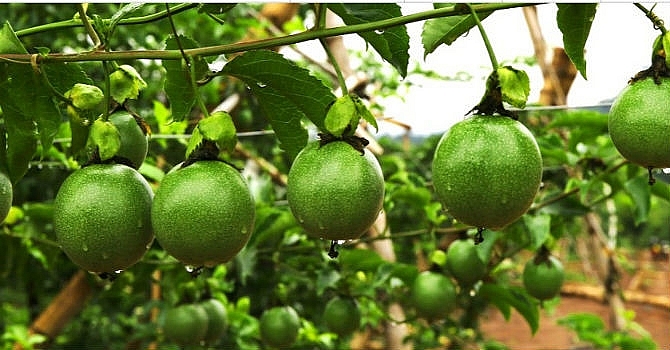
Spending approximately VND2.2 trillion ($97.3 million)
buying convertible bonds from Hoang Anh Gia Lai Agricultural JSC (HAGL
Agrico) will help Truong Hai Auto Corporation (Thaco) set a solid foothold in
the agricultural sector.
According to information published by HAGL Agrico, the
company issued a decision to sell 221,688 convertible bonds worth VND10
million ($428) each to Thaco for VND2.2 trillion ($97.3 million).
With the ratio of 1:1,000, Thaco can convert these
bonds into 221.688 million shares after one year.
HAGL Agrico will use VND1.137 trillion ($50.3 million)
of the capital acquired to invest in growing banana and chili, and the
remaining VND1.08 trillion ($47.78 million) to restructure its operations.
Thaco teamed up with Loc Troi Group to develop the
“Industrialisation of agriculture and operation of enclosed chain of
manufacturing, harvesting, processing, transporting, and distributing."
The total investment is about VND7.8 trillion ($345.1
million) and will include developing agriculture (about 310 hectares),
construction of ports and specialised transportation system by waterway and
the construction of a farm system (large sample field) on about 340 ha in the
first phase.
In January 2017, Thaco held a signing ceremony to
cooperate in producing and distributing agricultural machinery with LS Mtron
Company, the largest agricultural machinery manufacturer in South Korea with
40 per cent of the market share.
The factory, located in the Chu Lai-Truong Hai
Automobile Mechanical Complex at Chu Lai-Truong Hai Open Economic Zone in
Quang Nam province, has a total investment capital of VND500 billion ($22.1
million) and will manufacture 18-120HP agricultural tractors and harvesters,
and has a designed capacity of 2,000 tractors a year in the first phase,
3,000 cultivators, and 1,000 combine harvesters.
According to the agreement, LS Mtron has been
transferring tractor manufacturing technology and training Thaco’s engineers
to localise tractor component production to reach a regional value content
(RVC) of 50 per cent.
Machinery and equipment will be produced by Thaco with
advice from LS Mtron and some test equipment imported from South Korea that
cannot be produced in Vietnam, such as speed test equipment, lift test
equipment, and power take off (PTO) equipment.
In this February, the factory officially came into
operation after one year of construction.
Reed Tradex launches new alliance to promote supporting
industries
Reed Tradex, the organiser of METALEX Vietnam, has
announced a new alliance aimed at driving the development of the Vietnamese
supporting industries.
Reed Tradex has recently unveiled its alliance with
Japan External Trade Organisation (JETRO) in Ho Chi Minh City, Investment
& Trade Promotion Centre (ITPC), as well as Ho Chi Minh City Centre of
Supporting Industries Development (CSID) to co-organise the "Supporting
Industry Show 2018” in Vietnam in October.
Suttisak Wilanan, deputy managing director of Reed
Tradex, expressed his optimism about the exciting rebound of the automotive
industry in Vietnam, citing the Vinfast “Made in Vietnam” automobiles, which
has decided to cooperate with Italy’s leading design firm Pininfarina and
German luxury car company BMW. At the same time, Thaco also inaugurated the
biggest and most modern automobile manufacturing factory in Southeast Asia
last March, with a view to dominate the automobile industry.
“More than ever, car firms need to support and call on
supporting industry businesses to supply the necessary components," he
insisted. "There are over 30,000 parts in a vehicle, it is almost
impossible to manufacture all components in the same country. That is why
investors tend to establish factories in neighboring countries, surrounding
their manufacturing base. Vietnam is in a strategic location, located in the
centre of ASEAN, with many major seaports. Therefore, Vietnam can coordinate
with key players like Thai and Indonesian car makers to set up a sustainable
development cluster for the automobile industry."
According to data from the Ministry of Industry and
Trade, the total number of enterprises currently involved in the supporting
industry sector is 661. However, only a few domestic enterprises are capable
of joining the supply chains of foreign companies.
Therefore, the new alliance is expected to empower the
transfer of new technologies and the expansion of business networks between
Japanese and Vietnamese businesses, which are vital to sharpen the competitive
edge of the supporting industry.
Takimoto Koji, chief representative of JETRO in Ho Chi
Minh City, shared that, “Vietnam’s local procurement ratio was 33.2 per cent
in 2017. It is the lowest among the six countries in the survey. With the
“Supporting Industry Show 2018,” we aim to raise the local procurement rate
by connecting companies at the exhibition.”
To create “win-win relationships” between Japan and
Vietnam at "Supporting Industry Show 2018,” there will be 18 Japanese
major companies joining as buyers. Another 30 Vietnamese companies will
exhibit as suppliers, lead by ITPC and CSID.
The "Supporting Industry Show 2018” will be
organised on October 11-13 at Saigon Exhibition and Convention Centre. At the
same time, “METALEX Vietnam 2018" will gather and introduce 500 brands
of the latest machine tools and metalworking solutions from over 25
countries. The exhibition is expected to be more comprehensive with the
co-location of “NEPCON Vietnam 2018” which will be a platform for electronics
manufacturers to meet with providers of technologies and solutions from 200
brands of 20 countries.
Technological application crucial to agriculture
Technological application and improved management are
necessary to ensure high economic efficiency and sustainable development of
agriculture amidst widespread global integration and changing climate.
Experts have said automatic and semi-automatic
technologies used in agriculture have contributed to increasing output and
ensuring food safety.
Information technology is instrumental in overseeing,
directing and forecasting agro-forestry-fisheries production while
biotechnology helps choose high-yield varieties and breeding animals.
Technological advances are being adopted to grow
flowers, vegetables and raise fowl, cattle and aquatic products in Lam Dong,
Kien Giang, Bac Ninh, Vinh Phuc, Ha Nam and Nghe An.
Vietnam is now home to 35 high-tech agricultural areas
and five high-tech intensive farming areas for shrimp, flowers and rice which
have been recognised in Kien Giang, Lam Dong, Phu Yen and An Giang
provinces.
There are 12 high-tech cultivation enterprises, 19
others in aquaculture and nine in animal husbandry that use modern technology
nationwide.
The Vietnam Young Entrepreneurs Association’s Digital
Agriculture Association (DAA) called for building a sustainable, stable and
effective master plan for key agricultural products, from planning to
policies, incentives and trade promotion.
Luong Van Tu, Chairman of the Vietnam Coffee - Cocoa
Association, said to increase the value of coffee beans, firms must invest in
roasted, ground and instant coffee and other processed products, so they need
mid and long-term credits at reasonable rates.
Minister of Agriculture and Rural Development Nguyen
Xuan Cuong suggested offering incentives for imported technologies, improving
technological expertise at home and facilitating the transfer and purchase of
patents.
He urged facilitating agricultural firms’ access to
loans, developing start-ups and building high-tech incubators, targeting
young people and individual business households to inspire their start-up
spirit.
To master technological advances, he stressed the need
to improve skills of technical and governance staff, tertiary education and
vocational training quality.
VNN
|
Thứ Sáu, 10 tháng 8, 2018
Đăng ký:
Đăng Nhận xét (Atom)
Không có nhận xét nào:
Đăng nhận xét